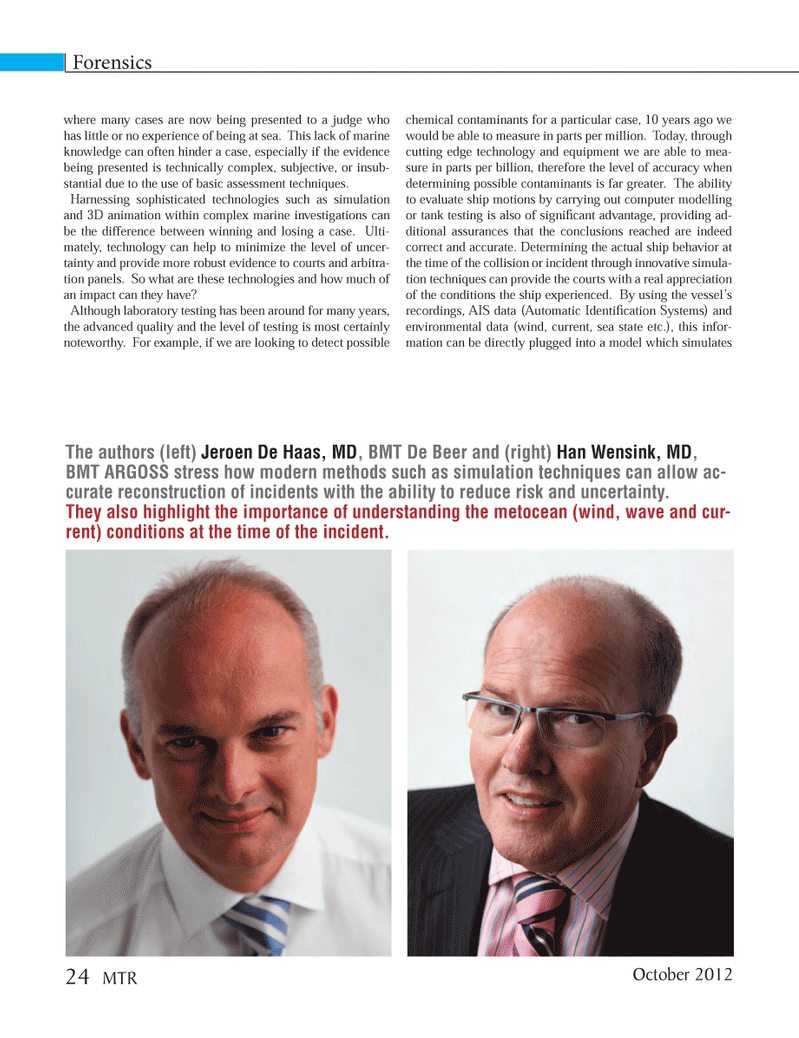
Page 24: of Marine Technology Magazine (October 2012)
Ocean Observation: Gliders, buoys & sub surface monitoring networks
Read this page in Pdf, Flash or Html5 edition of October 2012 Marine Technology Magazine
Forensics where many cases are now being presented to a judge who has little or no experience of being at sea. This lack of marine knowledge can often hinder a case, especially if the evidence being presented is technically complex, subjective, or insub- stantial due to the use of basic assessment techniques. Harnessing sophisticated technologies such as simulation and 3D animation within complex marine investigations can be the difference between winning and losing a case. Ulti- mately, technology can help to minimize the level of uncer- tainty and provide more robust evidence to courts and arbitra- tion panels. So what are these technologies and how much of an impact can they have? Although laboratory testing has been around for many years, the advanced quality and the level of testing is most certainly noteworthy. For example, if we are looking to detect possible chemical contaminants for a particular case, 10 years ago we would be able to measure in parts per million. Today, through cutting edge technology and equipment we are able to mea-sure in parts per billion, therefore the level of accuracy when determining possible contaminants is far greater. The ability to evaluate ship motions by carrying out computer modelling or tank testing is also of signiÞ cant advantage, providing ad- ditional assurances that the conclusions reached are indeed correct and accurate. Determining the actual ship behavior at the time of the collision or incident through innovative simula- tion techniques can provide the courts with a real appreciation of the conditions the ship experienced. By using the vesselÕs recordings, AIS data (Automatic IdentiÞ cation Systems) and environmental data (wind, current, sea state etc.), this infor- mation can be directly plugged into a model which simulates The authors (left) Jeroen De Haas, MD, BMT De Beer and (right) Han Wensink, MD , BMT ARGOSS stress how modern methods such as simulation techniques can allow ac-curate reconstruction of incidents with the ability to reduce risk and uncertainty. They also highlight the importance of understanding the metocean (wind, wave and cur- rent) conditions at the time of the incident.October 201224 MTRMTR #8 (18-33).indd 24MTR #8 (18-33).indd 2410/3/2012 9:43:59 AM10/3/2012 9:43:59 AM

 23
23

 25
25
